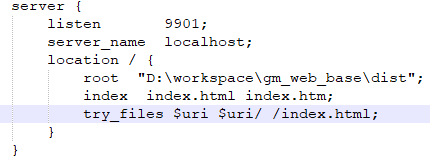I was doing a little exploring of a legacy system I maintain, with NDepend (great tool check it out), the other day. My findings almost made me spray a mouthful of coffee all over my screen. The top 3 functions in this system ranked by descending cyclomatic complexity are:
- SomeAspNetGridControl.CreateChildControls (CC of 171!!!)
- SomeFormControl.AddForm (CC of 94)
- SomeSearchControl.SplitCriteria (CC of 85)
I mean 171, wow!!! Shouldn't it be below 20 or something? So this made me wonder. What is the most complex function you maintain or have refactored? And how would you go about refactoring such a method?
Note: The CC I measured is over the code, not the IL.
This is kid stuff compared to some 1970s vintage COBOL I worked on some years ago. We used the original McCabe tool to graphically display the CC for some of the code. The print out was pure black because the lines showing the functional paths were so densely packed and spaghetti-like. I don't have a figure but it had to be way higher than 171.
What to do
Per Code Complete (first edition):
If the score is:
- 0-5 - the routine is probably fine
- 6-10 - start to think about ways to simplify the routine
- 10+ - break part of the routine into a second routine and call it from the first routine
Might be a good idea to write unit tests as you break up the original routine.
This is for C/C++ code currently shipping in a product:
the highest CC value that I could reliably identify (i.e. I don't suspect the tool is erroneously adding complexity values for unrelated instances of main(...) ):
- an image processing function: 184
- a database item loader with verification: 159
There is also a test subroutine with CC = 339 but that is not strictly part of the shipping product. Makes me wonder though how one could actually verify the test case(s) implemented in there...
and yes, the function names have been suppressed to protect the guilty :)
How to change it:
There is already an effort in place to remedy this problem. The problems are mostly caused by two root causes:
- spaghetti code (no encapsulation, lots of copy-paste)
- code provided to the product group by some scientists with no real software construction/engineering/carpentry training.
The main method is identifying cohesive pieces of the spaghetti (pull on a thread:) ) and break up the looooong functions into shorter ones. Often there are mappings or transformations that can be extracted into a function or a helper class/object. Switching to using STL instead of hand-built containers and iterators can cut a lot of code too. Using std::string instead of C-strings helps a lot.
I have found another opinion on this from this blog entry which seems to make good sense and work for me when comparing it against various code bases. I know it's a highly opinionated topic, so YMMV.
- 1-10 - simple, not much risk
- 11-20 - complex, low risk
- 21-50 - too complex, medium risk, attention
- More than 50 - too complex, can't test , high risk


